

Damion Smy
Hyundai teases Staria EV ahead of likely January reveal
2 Hours Ago

Design Contributor
Samuele Errico Piccarini is a transportation designer and self-taught photographer from Italy, who graduated from the IED Transportation Design course in 2020.
He was always passionate about cars, and before he became an automotive designer he used photography to observe cars from a different perspective, exploring different colour and lighting techniques through photo editing and CGI.

The Maserati GT Targa is a concept car created as a successor to the Pininfarina-designed Maserati GranTurismo (2007-2019). The project was made in collaboration with Fiat Chrysler during Samuele’s studies at IED Turin, with the goal of envisioning a Maserati GranTurismo for 2025.
The proportions of the car are heavily inspired by the rare and gorgeous Maserati A6GCS Berlinetta (1953-1955), with a very long bonnet, a steeply raked windshield, and a dropping GT-style roofline towards the rear.
Compared to the Maserati GranTurismo (2017-2019), the concept car aims for a more dramatic silhouette thanks to its lower roof, the higher belt line, larger diameter wheels, and the much longer hood thanks to the cabin moved backwards – doing away with the 2+2 layout of the production model.
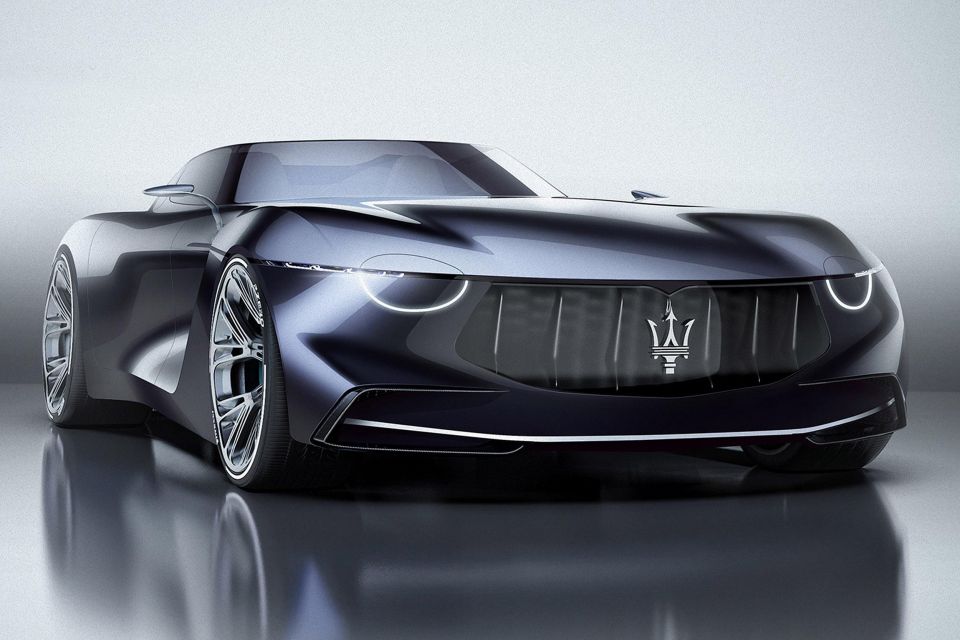
At the front, the GT Targa gets a huge grille with the Trident emblem and classic Maserati shape, however this time it’s covered by a transparent panel. This solution allows for better aerodynamics while retaining the grille’s three-dimensional appearance with six vertical slits decorated with chrome.
The lower part of the sculpted front bumper is characterised by a chrome splitter hiding inside the side air intakes with carbon fibre details.
The sharp line of the nose is shaping the LED headlights and continues to the front fenders interrupted by the large wheel arches. The headlights are very slim, and also boast elliptical LED units split in half. This design is similar to the headlight treatment found in the new Fiat 500 (2020), but it is also a reference to the Maserati Alfieri (2014) concept car, depicting the round headlight units of classic Maserati models from the ‘50s and the ‘60s.
The sexy curves of the long bonnet compliment the face of the car, giving it an equally aggressive and opulent look.
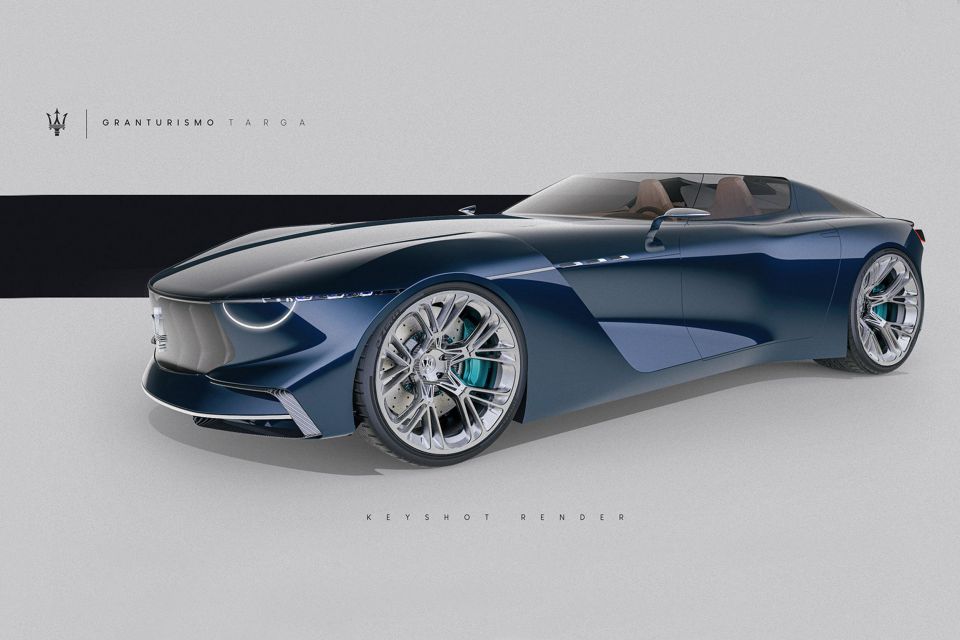
The openings on the front fenders are similar to those of a Ferrari F12 Berlinetta (2012-2017), but more dramatic. They create a slit on the bodywork starting from the bonnet and reaching low near the side sills, taking advantage of the large area between the front wheels and the windshield.
The dramatic curves of the side body panels allow for a muscular look creating beautiful reflections, although this gap somehow messes up with the continuity of the lines originating from the front end.
The curved and frameless windshield is very short, seamlessly merging with the side windows. At the same time, the glass roof panel is removable for an open-air driving experience. Further back, the wide rear fenders and toned shoulders create an hourglass-like design when you look at the car from above.
Another signature element is the rising window line on the strong pillars, and the opposite inclination of the “clamshell” rear windscreen that is visible from the side.
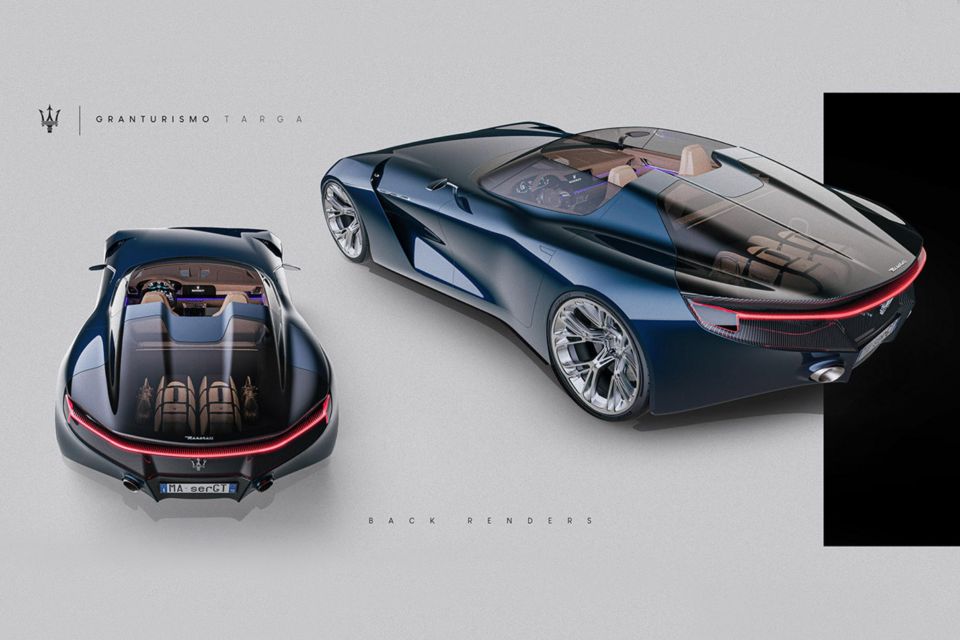
Moving over to the back, the most striking feature is the transparent panel covering the rear deck. It works both as a rear windscreen and a cover for the luggage compartment, following the soft curves of the domes behind the headrests as they fade into the long tail.
This design brings visual lightness and emphasises the luxurious and exotic qualities of the car. After all, as a GranTurismo this Maserati is designed for travel, so why not show-off the beautiful luggage set that comes with the car?
Below the transparent panel, we find a single LED strip for the taillights with a three-dimensional look, appearing from an insert that looks like it is made from carbon-fibre. The middle part drops further down on the bumper with two strong creases on both sides of the licence plate.
The rest of the bumper is very simple in its design, with soft curves bringing more visual lightness. Last but not least, the presence of dual oval tailpipes adds visual drama while promising this car will sound like a true Maserati.
Samuele didn’t provide us renderings of the interior, but from what we can see it is upholstered in tan leather. The dashboard has ambient lighting and a central screen for the infotainment, while the three-spoke steering wheel has aluminum inserts and a digital instrument cluster behind it.
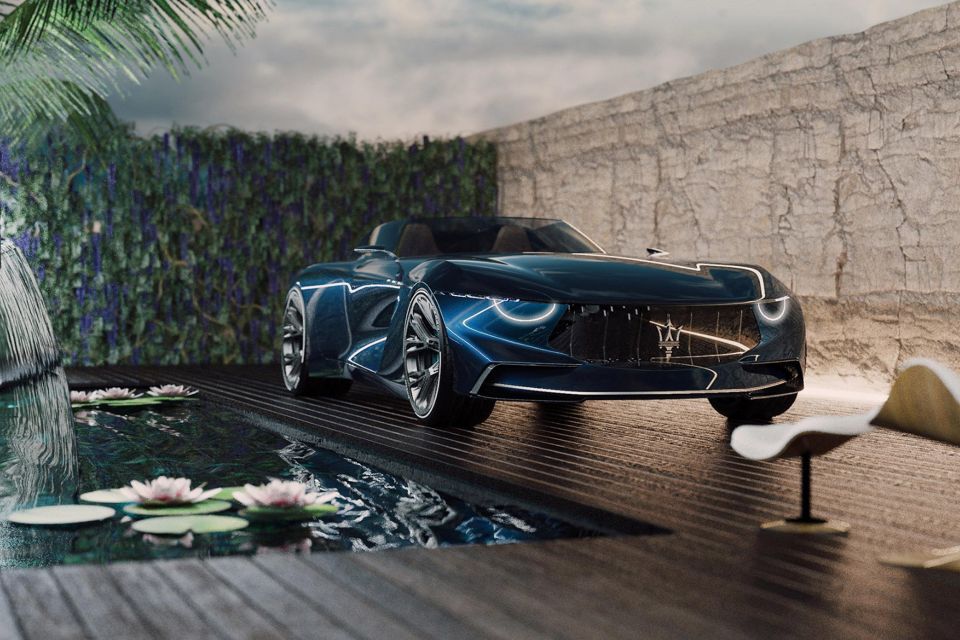
The Maserati GT Targa might be just a styling exercise, but it manages to evoke everything you would expect of a luxurious grand tourer from the future. Samuele managed to integrate the true essence of Maserati, proposing an even more premium, exclusive and exotic direction for the future of the Italian brand, as a nod to its coach building era.
Thus, while not being compatible with Maserati’s new design language introduced by the brand new MC20 production car (it was designed prior to its launch), the GT Targa has its own value, even with a few over the top details that are always welcome in a prototype.
If you are wondering, a production version of a design like this would not be viable, except if it was an ultra-expensive and low volume hypercar targeting car collectors – the equivalent of a front-engined Bugatti.
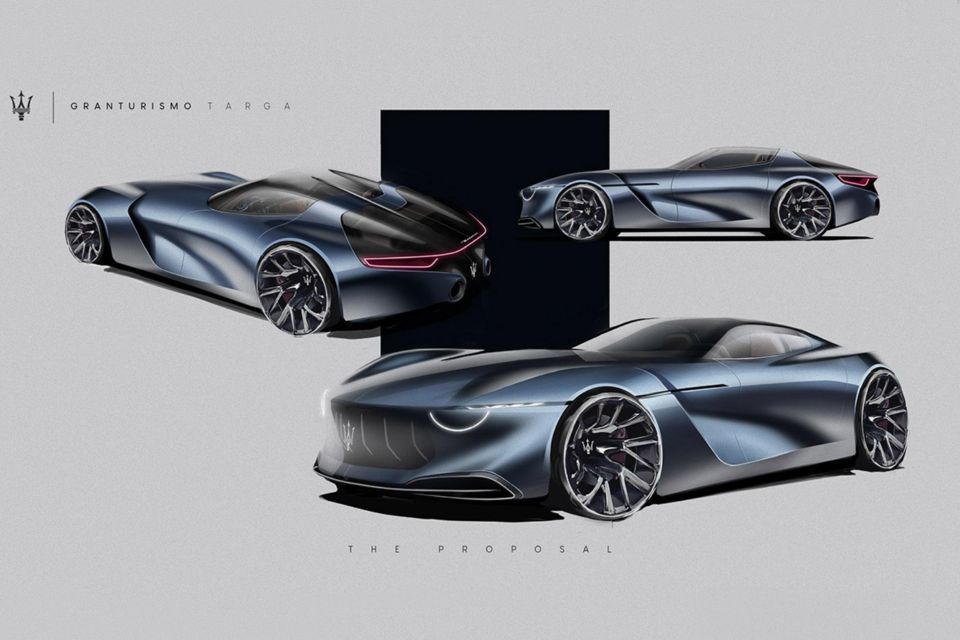
The successor to the GranTurismo that will be unveiled in 2021 is expected to be more down-to-earth in terms of design, borrowing elements from the Alfieri (2014) concept car while retaining the proportions of its predecessor (as seen from the latest teaser).
After all, the new Maserati GranTurismo is aiming to compete with the likes of Bentley Continental GT and Aston Martin DB11.
If you liked the Maserati GT Targa, you can find more examples of Samuele’s work on his Instagram or Behance profiles.
Disclaimer: The Maserati GT Targa was independently designed by Samuele Errico Piccarini for show purposes as a free-time project, and is not associated with Maserati.
Where expert car reviews meet expert car buying – CarExpert gives you trusted advice, personalised service and real savings on your next new car.


Damion Smy
2 Hours Ago


Damion Smy
6 Hours Ago


Damion Smy
7 Hours Ago


Damion Smy
8 Hours Ago


Damion Smy
8 Hours Ago


Josh Nevett
8 Hours Ago